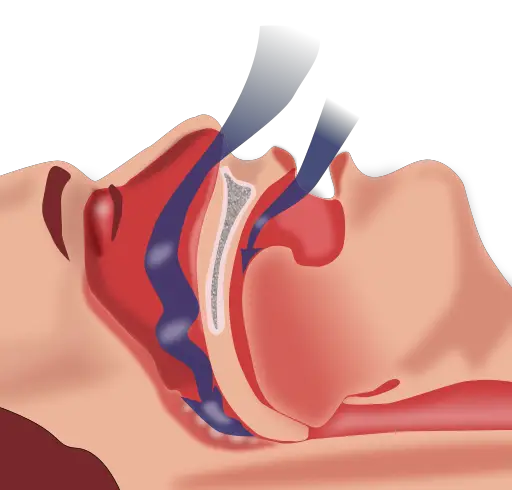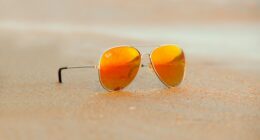Snoring is noisy breathing during sleep, often harmless. Sleep apnea involves pauses in breathing, affecting oxygen levels, and may pose health risks.
TL;DR Snoring Vs. Sleep Apnea
Snoring is a common issue that occurs when the flow of air through the mouth and nose is partially obstructed during sleep. It can be caused by various factors such as obesity, alcohol consumption, or nasal congestion. Snoring itself may not always be a cause for concern but could indicate an underlying health issue.
Sleep apnea is a more serious condition characterized by brief interruptions in breathing during sleep. These pauses in breathing can occur numerous times throughout the night and result in fragmented sleep patterns. Sleep apnea requires medical attention as it has been linked to several significant health risks including high blood pressure, heart disease, stroke, and diabetes.
What is Snoring?
Snoring is the noise produced when airflow causes the tissues of the throat to vibrate during sleep.
Common factors contributing to snoring include relaxation of throat muscles, nasal congestion, or tongue position. It is often harmless but can be indicative of underlying issues like sleep apnea.
Snoring disrupts sleep quality, affecting both the snorer and their sleep partner. Lifestyle changes, positional therapy, or medical interventions may address snoring, improving sleep and overall well-being.
What is Sleep Apnea?

Sleep apnea is a sleep disorder characterized by pauses in breathing or shallow breaths during sleep. These interruptions, called apneas, can last seconds to minutes, leading to decreased oxygen levels and disrupted sleep.
Common types include obstructive sleep apnea (OSA), where the throat muscles relax excessively, and central sleep apnea, involving a lack of respiratory effort. Symptoms include loud snoring, gasping, and excessive daytime sleepiness.
Sleep apnea is linked to health issues like cardiovascular problems. Treatment options include lifestyle changes, continuous positive airway pressure (CPAP) therapy, or surgery, depending on the severity and type of apnea.
Snoring Vs. Sleep Apnea – Key differences
| Characteristic | Snoring | Sleep Apnea |
|---|---|---|
| Definition | Noise caused by vibrating throat tissues during sleep | Sleep disorder characterized by pauses in breathing during sleep |
| Sound Type | Continuous, rhythmic sound | May involve silent pauses in breathing followed by gasps or snorts |
| Breathing Interruptions | No significant pauses in breathing | Periodic pauses in breathing during sleep, known as apneas |
| Airflow Obstruction | Partial obstruction of airflow in the throat | Partial or complete obstruction of airflow, often due to relaxed throat muscles |
| Severity | Mild to severe, not always indicative of a sleep disorder | Can range from mild (few apneas) to severe (frequent and prolonged apneas) |
| Associated Symptoms | Often loud snoring, occasional daytime sleepiness | Loud snoring, gasping, choking, excessive daytime sleepiness, difficulty concentrating |
| Health Impacts | Typically considered a nuisance; may disrupt sleep for the snorer or their partner | Can lead to serious health issues, including cardiovascular problems and increased risk of accidents |
| Diagnosis | Based on the sound of snoring; often self-reported | Requires a sleep study (polysomnography or home sleep apnea testing) for diagnosis |
| Treatment | Lifestyle changes, positional therapy, or anti-snoring devices | CPAP therapy, lifestyle changes, positional therapy, oral appliances, or surgery, depending on severity |
Diagnosis and treatment options for snoring and sleep apnea
Diagnosis of Snoring
- Clinical Evaluation: Healthcare providers assess the patient’s medical history, sleep patterns, and lifestyle factors.
- Sleep Diary: Keeping a record of sleep habits, including snoring frequency and severity.
Partner Observation: Input from a sleep partner regarding snoring patterns.
Diagnosis of Sleep Apnea
- Polysomnography (PSG): An overnight sleep study in a sleep center monitors various parameters, including breathing, oxygen levels, and brain activity.
- Home Sleep Apnea Testing (HSAT): Portable devices used at home to monitor key sleep metrics.
Treatment Options for Snoring:
- Lifestyle Changes: Weight management, positional therapy, avoiding alcohol and sedatives before bedtime.
- Sleep Position Devices: Devices to encourage sleeping in a specific position to reduce snoring.
Treatment Options for Sleep Apnea
- Continuous Positive Airway Pressure (CPAP): A machine delivers a continuous stream of air to keep the airway open.
- Bi-level Positive Airway Pressure (BiPAP): Adjusts air pressure for inhalation and exhalation.
- Oral Appliances: Dental devices reposition the jaw to prevent airway collapse.
- Weight Management: Addressing obesity, a common contributing factor.
- Positional Therapy: Encouraging sleeping in certain positions to reduce apneas.
- Surgery: For severe cases, procedures like uvulopalatopharyngoplasty (UPPP) or genioglossus advancement (GA) may be considered.
Consultation with a healthcare professional is crucial for accurate diagnosis and appropriate management.
Image Credits
Featured Image By – Dyolf77, Public domain, via Wikimedia Commons
Image 1 By – https://www.myupchar.com/en, CC BY-SA 4.0 <>, via Wikimedia Commons








